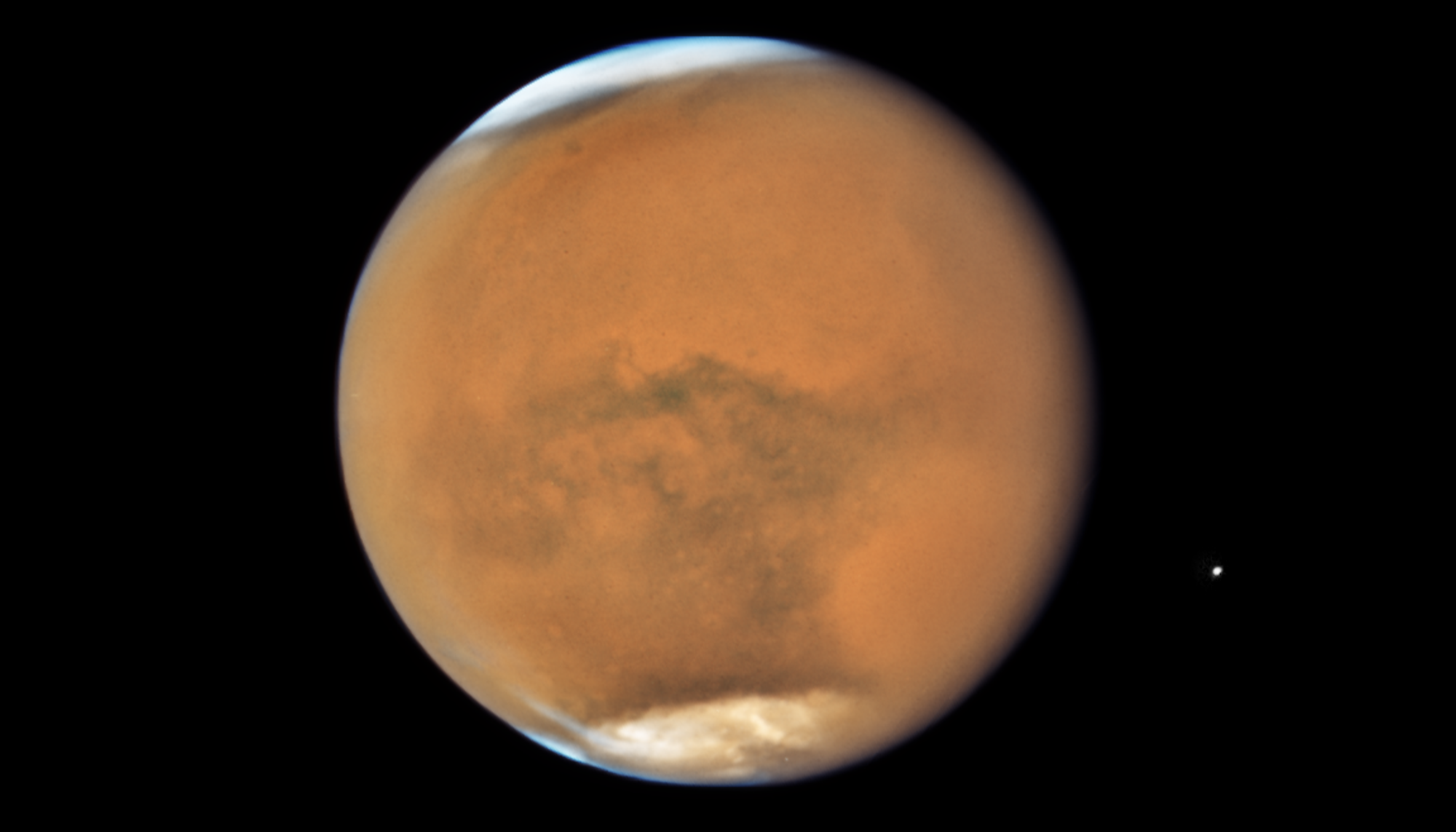Mars, often referred to as the Red Planet, is the fourth planet from the Sun. It is a cold, desert world with a thin atmosphere and a surface covered in rust-colored dust. Despite its harsh conditions, Mars has long captivated the imagination of scientists and the public alike, as it holds the potential for past or present life.
Physical Characteristics
- Size and Composition: Mars is about half the size of Earth and has a similar composition, with a rocky core and a mantle. However, its crust is much thinner than Earth’s, and its surface is covered in a layer of iron oxide dust, which gives it its reddish hue.
- Atmosphere: Mars has a thin atmosphere composed primarily of carbon dioxide, with small amounts of nitrogen and argon. The atmosphere is much less dense than Earth’s, and it cannot effectively trap heat, resulting in cold temperatures.
- Surface: Mars is a cold, desert world with a surface covered in craters, volcanoes, and vast plains. The planet also has two small moons, Phobos and Deimos, which are thought to be captured asteroids.
Evidence of Water
One of the most exciting discoveries about Mars is the evidence of past water on the planet. Scientists have found evidence of ancient riverbeds, lakes, and even oceans on Mars. These findings suggest that the planet may have once been a much more hospitable environment, with conditions suitable for life.
Exploration of Mars
Mars has been the target of many spacecraft missions, including the Mariner, Viking, and Pathfinder missions. More recently, the Mars Exploration Rovers Spirit and Opportunity explored the Martian surface for several years, discovering evidence of past water and studying the planet’s geology.
The Curiosity rover, which landed on Mars in 2012, is currently exploring Gale Crater, a location that was once a lake bed. Curiosity has found evidence of organic molecules and conditions that may have been suitable for microbial life.
Future Mars missions may involve sending humans to the Red Planet. NASA has plans to send astronauts to Mars in the 2030s, and other space agencies are also developing their own Mars exploration programs.
The Search for Life
The possibility of past or present life on Mars is one of the most compelling reasons for exploring the planet. While there is no definitive evidence of life on Mars, the discovery of water and organic molecules suggests that the planet may have once been habitable. Future missions may focus on searching for signs of microbial life or exploring the potential for colonizing Mars.
Mars remains a fascinating and mysterious planet, and its exploration continues to inspire scientists and the public alike. As we learn more about the Red Planet, we may gain a better understanding of the origins of life and the potential for human exploration beyond Earth.
